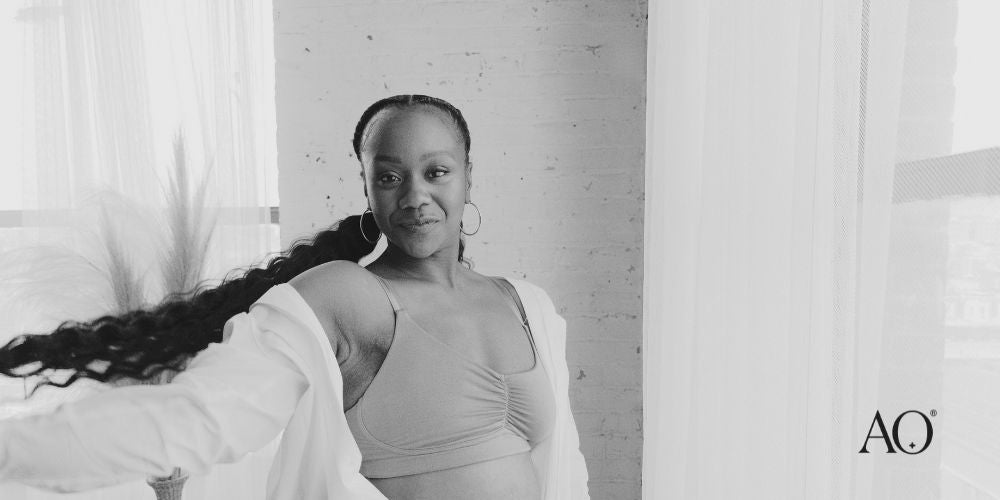Navigating Choice: Unilateral vs. Bilateral Mastectomy
When faced with a breast cancer diagnosis, one of the most significant decisions a patient has to make is what surgery will be best for patient outcome and lifestyle. A mastectomy is a surgical procedure involving the full removal of the breast tissue, ductal system, and most nerves. Depending on individual circumstances and diagnosis, the choice between a unilateral or bilateral mastectomy may arise. Below, we will explore the pros and cons of each option, highlighting the importance of making an informed decision based on diagnosis, overall health, and personal choice.
Unilateral Mastectomy: Embracing Individuality

"There is nothing wrong with having one breast. There's also nothing wrong with getting reconstruction. No matter what choice you make, know that you are beautiful and you're never alone."
A unilateral mastectomy involves removing the cancerous breast, while leaving the unaffected breast intact. Here are some factors to consider when opting for this breast cancer surgery:
- Targeted Treatment: For patients with cancer localized in one breast, a unilateral mastectomy enables focused treatment by eliminating the source of the disease. This approach can potentially spare healthy breast tissue in the unaffected breast, but could also cause further intervention on the cancerous side, such as radiation therapy or additional lymph node removal.
- Psychological Well-being: Maintaining one's natural breast can help to preserve body image and self-confidence, as it may not require additional reconstructive surgeries or adjustments to clothing and undergarments.
- Minimal Physical Impact: Unilateral mastectomy generally has a shorter recovery period compared to bilateral mastectomy, allowing patients to resume their daily activities sooner by leveraging mobility in the non-surgical side.
However, it's essential to acknowledge the potential drawbacks:
- Risk of Recurrence: Opting for a unilateral mastectomy carries the risk of cancer recurrence in the remaining breast. Regular screenings and vigilant surveillance are crucial for early detection and continued monitoring of the breast tissue should be taken very seriously and maintained on annual basis.
- Psychological Burden: Some individuals may experience anxiety or constant worry about the possibility of developing cancer in the unaffected breast. Counseling and support groups can be valuable resources in managing these emotions. We recommend joining a local support group, but if there is not one available, Living Beyond Breast Cancer and The Breasties are great resources to find others facing a breast cancer diagnosis.
Bilateral Mastectomy: A Comprehensive Approach

"AnaOno is great for all sorts of chest types, whether you have one boob or multiple or not - it's great for everyone."
A bilateral mastectomy involves the removal of both breasts, even if only one breast is affected by cancer. Let's explore the advantages and considerations associated with this choice:
- Risk Reduction: By removing both breasts, the risk of developing cancer in the unaffected breast is significantly reduced. This option can provide peace of mind and alleviate anxiety related to future cancer occurrences.
- Symmetry and Reconstruction: For individuals seeking symmetry or those at high risk due to genetic factors, bilateral mastectomy followed by breast reconstruction can provide a sense of balance and restore self-esteem.
- Simplified Surveillance: With no breast tissue remaining, monitoring for cancer becomes less complex, as there is no need for frequent screenings or ongoing surveillance of the unaffected breast. However, when opting for implant reconstruction, consult your doctor to establish annual screening protocols for monitoring overall implant wellness, the FDA recommends that every 3-years a patient should undergo breast MRI to monitor the structure of the implant.
Nonetheless, there are factors that should be taken into account:
- Emotional Impact: The decision to undergo a bilateral mastectomy can be emotionally challenging. The loss of both breasts can affect body image, femininity, and overall self-perception. Support from loved ones, counseling, and therapy are vital during this time, follow along with us at @AnaOnoIntimates on Instagram to share in stories.
- Extended Recovery Period: Bilateral mastectomy often involves a more extensive surgical procedure, which can result in a longer recovery time and potential complications. It's important to discuss these aspects with your medical team and plan accordingly. Taking the required time off of work can feel overwhelming, tap into resources such as Cancer And Career’s to help navigate the transition and patient rights in the workplace.
The Power of Personal Choice
Ultimately, the choice between unilateral and bilateral mastectomy should be made based on a patient's unique circumstances, overall health, and personal preferences. Every individual's journey with breast cancer is different, and what works for one person may not be the ideal option for another. Consulting with a multidisciplinary team of healthcare professionals, including surgeons, oncologists, and counselors, can provide invaluable guidance and support throughout the decision-making process.
Looking for a comprehensive resource for breast reconstruction options, visit BreastReconstruction.org to discover & learn more.
When it comes to deciding between a unilateral and bilateral mastectomy, it's crucial to prioritize personalized care. Understanding the advantages and drawbacks of each option empowers patients to make informed choices aligned with their diagnosis, overall health, and personal preferences. Remember, no matter which path you choose, there are resources to support you all the way through. You are Never Alone.
















